Having your own solar pool heating system in place sure sounds very enticing. There is a lot of planning that goes into building a heating system. This guide is intended to give you an overview of what’s involved.
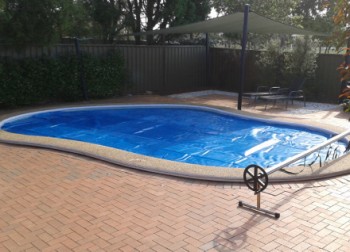
We recommend this one here due to it’s high rating.
Also, the area you live in and the amount of sun your pool and roof gets is a consideration. In colder areas, like Tasmania, solar heating may not be a good choice for you. It is however perfect for Sydney, Brisbane, Melbourne and other warmer parts of Australia. Please see our article 4 Top Pool Heating Options to guide you on the pool heating options and what option best suits you.
So let’s jump into it and take a closer look at what you need to get started.
[cta id=”2833″ vid=”0″]
Article Contents
Equipment Required To Build Your Solar Pool Heating System
There are 3 major components to consider in a do it yourself solar pool heating system. They include:
1) The solar collector arrays: The collectors are the most important parts of the solar pool heating system. They are most commonly mounted on the roof of your house. Sometimes they are mounted on the ground too if the roof is not an option.
The two most popular options for collector arrays are Strip Solar Heating and Panel Systems. Each has their advantages and disadvantages-what you choose will depend on several factors such as you location, size of pool and your budget. I recommend that you do some research into which option is most suited to your situation.
2) The controller & Booster Pump: The controller is used for directing the water from the filter and pump to the solar collectors for heating. Although you could install a manual valve system, a solar controller makes life easy and maximises the efficiency of the system. Solar heating controllers regularly check water temperature and automatically regulate the system to your chosen temperature.
The solar booster pump is not completely necessary and you could use the filter pump to do this. However, the filter pump is designed to filter water so it is recommended you get a booster pump designed for pool heating. You’ll maximise the heat you get and also minimise the running costs.
3) The pipes and mounting hardware: You’ll need to run some additional pipes from your pool equipment to the location of the solar collector arrays. The mounting hardware is used for making sure the collectors are held securely on the ground rack or on the roof.
If you live in a windy area and are mounting the solar collectors on your roof, you’ll need some extra hardware to make sure everything is properly secured to the roof.
How Much Does A Solar Pool Heating System Cost?
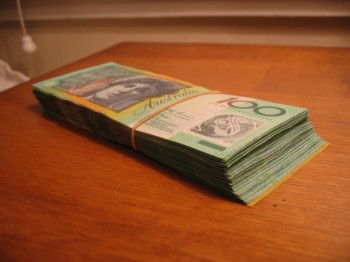
1. The size/number and quality of the solar collector arrays.
2. If you buy additional equipment such as the controller and booster pump (plus they vary in cost).
3. The distance between the pool equipment and the roof of the house.
Purchasing the components for building a solar pool heating system is the easy part and you can either get them from your local pool store or you can get them on the internet.
Buying And Installing The Solar Panels / Collector Arrays
In terms of how many panels you need to consider, this will depend on a number of factors such as:
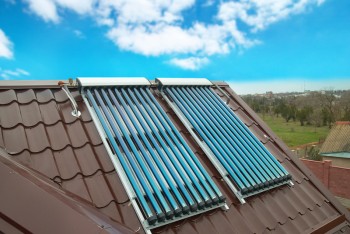
2. Pool size.
3. Amount of sun and shade on your roof and pool.
4. Pool and roof direction.
5. The colour of your pool and roof surface.
6. Type of pool (fibreglass, concrete, above ground).
7. The type of solar collector used.
The general rule of thumb is to make the collector array the same area as the area of your pool. There are also calculators available online to help you figure out a more precise figure. The manufacturers of the collector arrays normally have specific recommendations. The efficiency of different collectors varies too so you may need more or less collectors.
Pro Tip: don’t forget to check your roof is big enough to mount the collectors on.
How To Attach The Solar Panels To The Roof
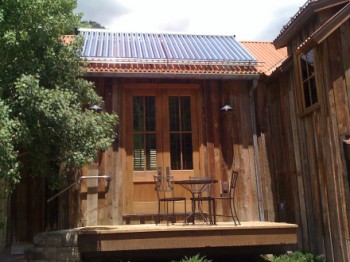
b) Install the Hardware – The most difficult part of installing your solar panels lies in fastening them. For this part, you’ll need some rust proof brackets, roofing bolts, stainless steel straps, angle aluminium or Unistrut. You may also need some other fittings. You can get these items from the store you purchased the heating kit from.
c) Fix it to the Roof – When you install the brackets, match sure you secure them to the rafters or the battens underneath the roof covering. If you live in a high wind area, you will also need to use additional mountings, such as steel cables or straps.
Panels should be mounted close the roof surface (< 20mm) to prevent the wind getting under them.
What Size Pump Do I Need?
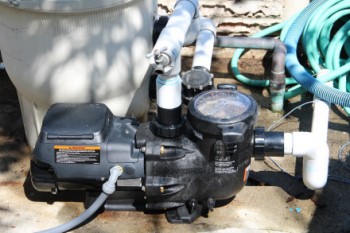
To select the right pump for your solar pool heating system you need to check the design charts matching the pump’s hydraulic characteristics to the pool’s flow and piping characteristics. Most of the time it’s local pool supply dealers that have access to these charts, so it’s best to get in touch with them about this. You’ll also need to check the collect array for the required flow rate and pressure specifications.
In general though, for average sized pools and solar pool heating systems a 0.5 to 1HP pump is sufficient, unless you have a large number of collectors, a very high roof or a very long pipe run.
Position your pump in with all your other pool equipment. After you’ve positioned your pump properly, you need to consider installing a three way pool valve in order for the water to be directed to the pool or the panels.
What Pipe Size Do I Need
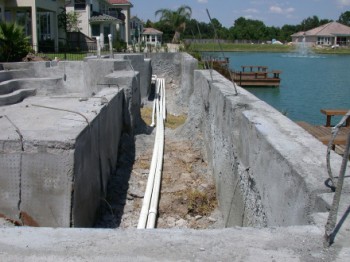
Unless you like the look of plumbing pipes running across your yard, you’ll want to dig some trenches so they can be buried.
Hint: don’t cover the trenches up until you’ve tested the system. You may have a leak that needs fixing!
How Do I Connect All the Heating Pipes Up?
There are several different ways you can connect up pool heating systems. Below shows your a few of the most popular ways to plumb your system.
Pool Solar Heating Booster Schematic
Pool Solar Heating Independent Schematic
Pool Solar Heating Manual Schematic
Test the System
When everything is connected, it’s time to test. When you do so, you should make sure to check for leaks. You should also touch the collector array at the inlet and return. The return should feel a few degrees warmer if everything is working correctly.
Keep in mind that a small pool will take a day or two to become noticeably warmer and if the temperature doesn’t drop too much during night time, the temperature of your pool will increase by a few degrees every day. A solar pool cover will minimise heat loss during the night and when you’re not using the pool.
This guide was meant as a brief overview of what’s involved in installing DIY solar pool heating. We may later publish a much more detailed version.
We would love to hear your thoughts or experiences on DIY Solar Pool Heating. Please leave a comment below. And don’t forget to share this article to anyone who may be interested in it.
[cta id=”2833″ vid=”0″]
Recommended Products
These are affiliate links. If you use them, they cost you nothing extra. We make a small commission. You can read our disclosure here.
DIY Solar Heating – this is an Amazon US link, many listings ship to Australian and other countries.
Photo Credits: Blog Photo Attribution: By Cimexus ; Blog Photo Attribution: By Dave Dugdale ; Blog Photo Attribution: By aaron_anderer ; Blog Photo Attribution: By Bill Jacobus

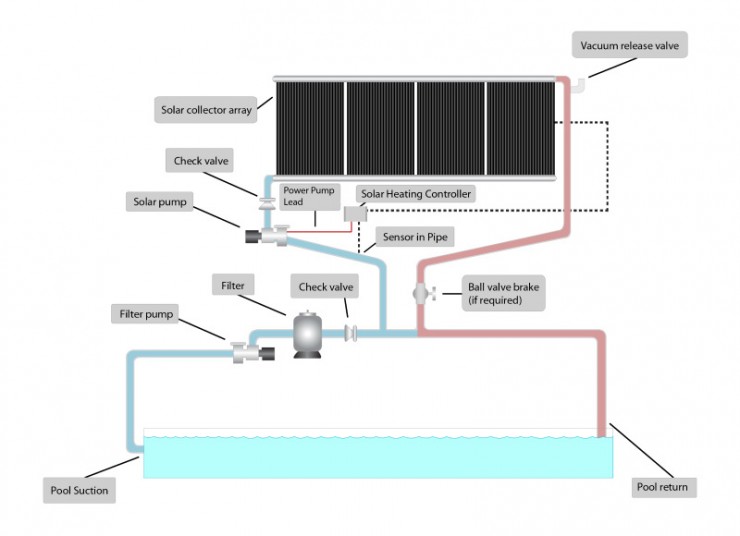
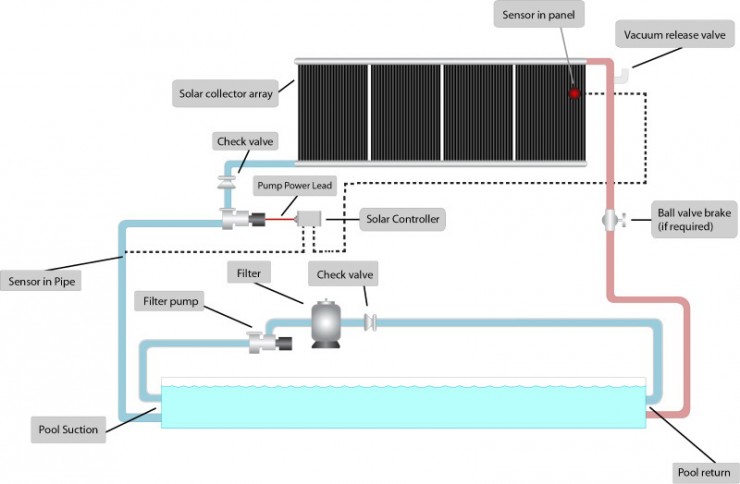
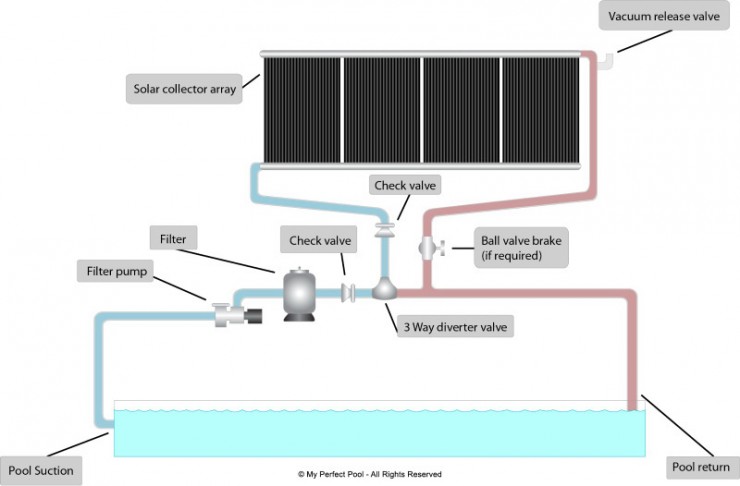

Hi, my existing pump runs at 400 LPM. Is this flow rate OK to run solar heating also? Kind Regards Dave.
or just collector ” Replacement Kit ” – for people that just need to replace their old PVC tube collectors on the roof
With the second diagram – Pool Solar Heating Independent Schematic, why would the solar feed bypass the filter? I would have expected all water to have to go through the filter whether being heated by solar or not. The other diagrams run the solar feed through the filter.
I’ve just moved to solar for my power so have programmed my filter pump to run during the day. I have a pool cover. Separately I have a solar hot water system for the pool with its own pump. Naturally the hot water pump will run during the day, likely in tandem with the filter pump. Is running two pumps essentially through the same system a problem or do I need to ensure they don’t run at the same time. Any advice appreciated please. Richard
If the system was designed and installed correctly it should be fine to run both at the same time. We suggest you run your filter pump for 2-4 hours during the hottest parts of the day as the chemicals tend to concentrate near the top of the water. This will increase the life of your pool cover and also it will keep the chemicals evenly distributed throughout your pool.